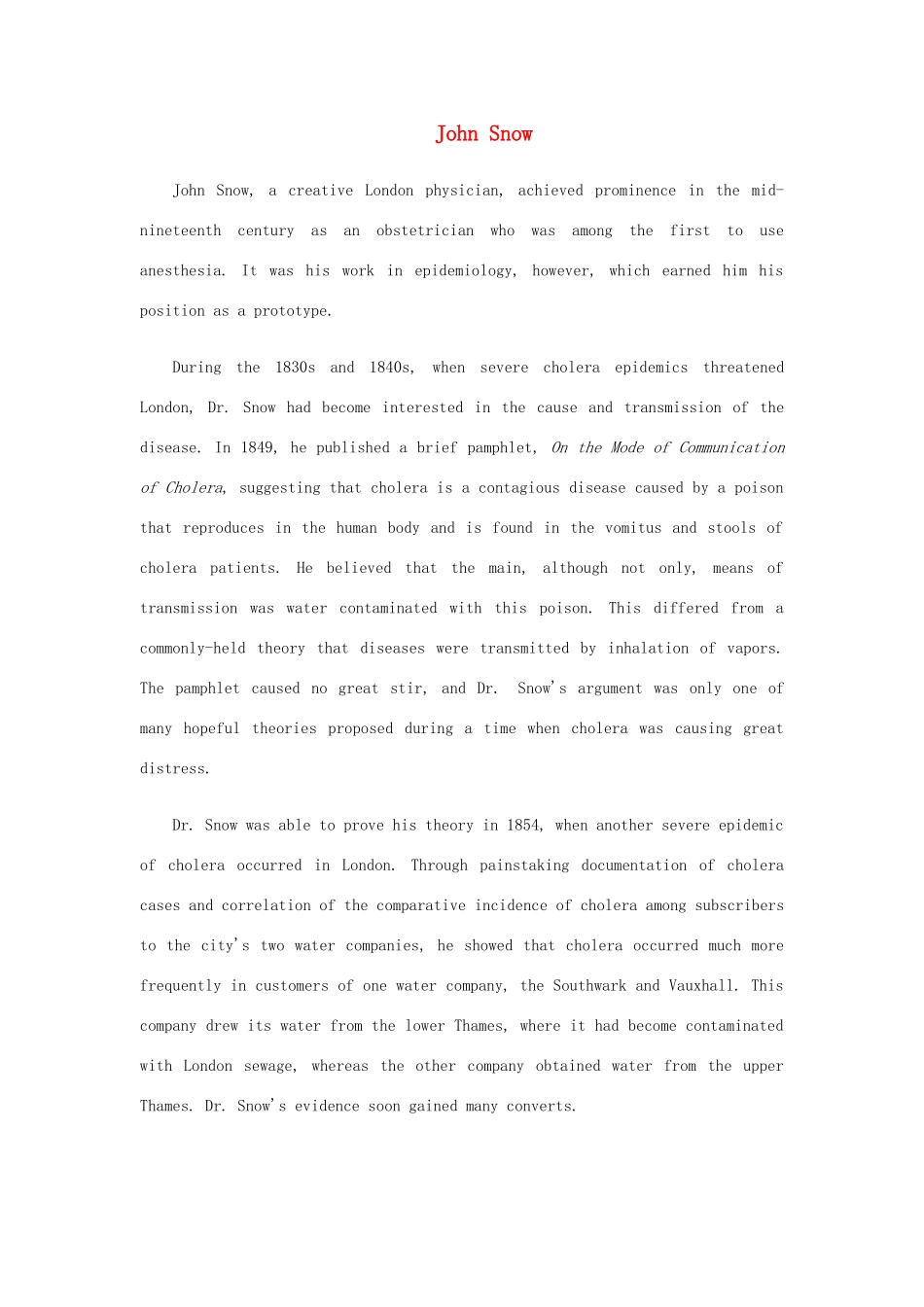John SnowJohn Snow, a creative London physician, achieved prominence in the mid-nineteenth century as an obstetrician who was among the first to use anesthesia. It was his work in epidemiology, however, which earned him his position as a prototype.During the 1830s and 1840s, when severe cholera epidemics threatened London, Dr. Snow had become interested in the cause and transmission of the disease. In 1849, he published a brief pamphlet, On the Mode of Communication of Cholera, suggesting that cholera is a contagious disease caused by a poison that reproduces in the human body and is found in the vomitus and stools of cholera patients. He believed that the main, although not only, means of transmission was water contaminated with this poison. This differed from a commonly-held theory that diseases were transmitted by inhalation of vapors. The pamphlet caused no great stir, and Dr. Snow's argument was only one of many hopeful theories proposed during a time when cholera was causing great distress.Dr. Snow was able to prove his theory in 1854, when another severe epidemic of cholera occurred in London. Through painstaking documentation of cholera cases and correlation of the comparative incidence of cholera among subscribers to the city's two water companies, he showed that cholera occurred much more frequently in customers of one water company, the Southwark and Vauxhall. This company drew its water from the lower Thames, where it had become contaminated with London sewage, whereas the other company obtained water from the upper Thames. Dr. Snow's evidence soon gained many converts.
